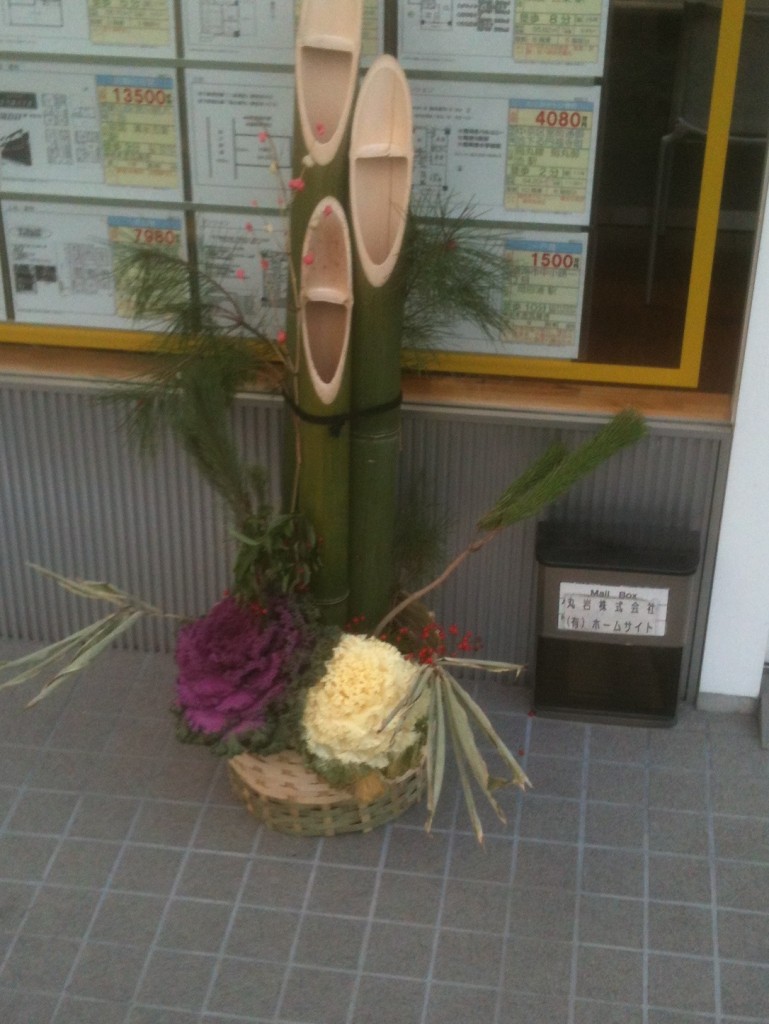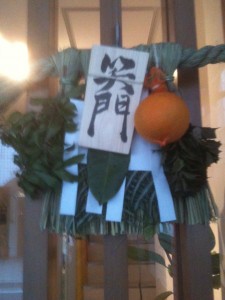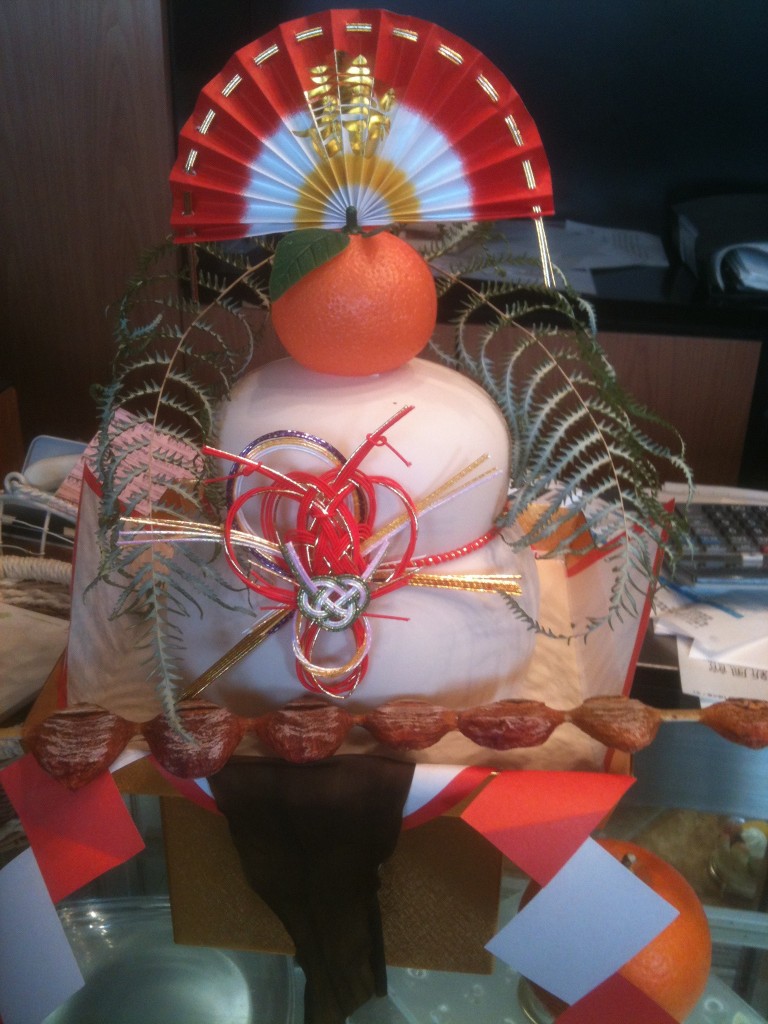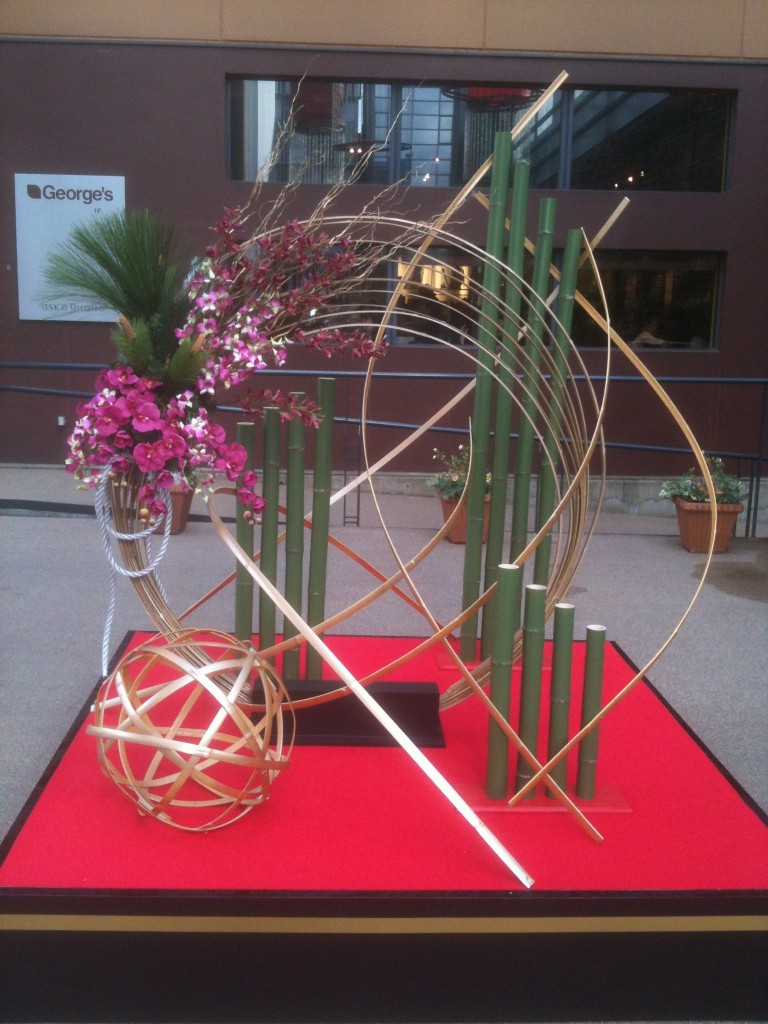Downtown New Year decorations (First posted on January 5, 2012)
Kyoto is awash with colourful New Year decorations, many of which are packed with symbolic meaning. It’s amazing what is going on in these simple displays: no wonder Derrida called Japan an Empire of Signs!!

The typical Kadomatsu decoration in front of shops and at the entrance to buildings has bamboo (for perseverance), pine (longevity), and plum (for the coming spring).
There’s also a touch of red with the nanten berries, symbolising that good luck is coming. (Nan means difficulty, ten means turning, so the name suggests the plant can help overcome misfortune and turn bad luck into good.)
Down at the bottom are habotan ornamental cabbages, which are for luck rather than for eating. They’re particularly associated with the New Year, being auspicious and symbolic, though why I’m not sure…
Some displays say Geishun (Welcome Spring), a little early you might think in the midst of January snows but in the old lunar calendar, when the Japanese New Year coincided with the Chinese instead of the Western calendar, it made good sense in looking forward to the coming season.
Here on the right is a typical Kyoto style with rice rope, daidai orange, and white shide paper strips complemented by a red mizuhiki string knot (red and white being congratulatory colours).
The rice rope is to protect the building, and is a reference to the Rock Cave myth when Amaterasu was prevented from reentering by a rope stretched across the entrance.
The bitter orange is named daidai (generations), and expresses the wish that happiness will continue for generations (in that the family will go forth and multiply for generations to come).

Here on the left is another display with a daidai orange, and a notice saying ‘Shomon’, meaning Laughing or Smiling Gate (warau can mean either in Japanese). The idea is that if you smile or laugh, then happiness will enter into your house. Laugh, and the whole world laughs with you…
Below is a car decoration, with rice rope, daidai orange, yuzuriha leaves and urajiro fern leaves. There’s a lot packed onto that bumper…
The yuzuriha is a deciduous tree, and its new leaves push out the old ones, symbolising the passing to a new stage of life. The New Year is ousting the old. Lafcadio Hearn however says that because none of the leaves falls off until the new one is well established, it symbolises the hope that the father will not pass away before his son is mature enough to succeed him.
Urajiro leaves are white on the back, and the fern symbolises conjugal life because the fronds form in pairs from the stem. So happy coupling is the message…


To the left is the Kanto style of New Year decoration. Typically, it’s rather more gaudy and showy than the discrete and more sophisticated Kyoto style!
The fan is spread out to display red and white congratulatory colours. There are the urajiro fern leaves, to express the wish for happy conjugal life.
The base is formed by a couple of round kagami rice cakes (for fertility), and the intricate mizuhiki knot is supposed to suggest a lobster (for long life).
The kagami rice cakes are usually in pairs, with a smaller one sitting on top of a larger. The symbolic meanings is variously interpreted as yin and yang, the moon and sun, or the departure of the old year and the coming of the new year.
On Jan. 11 there’s a kagami-biraki ritual, where the rice cakes are broken up into smaller pieces and then eaten – a kind of New Year communion, you could say.
Finally, from the ikenobo school of ikebana an artistic contemporary style using traditional materials, with a splash of gold and silver for the congratulatory effect. Rather nice updating of a splendid tradition that signifies just how important are fresh beginnings and rituals of commencement in Japanese culture – a legacy of Shinto, one might say, in reflecting a concern with vitality, purity and renewal.



Barthes not Derrida ;-)